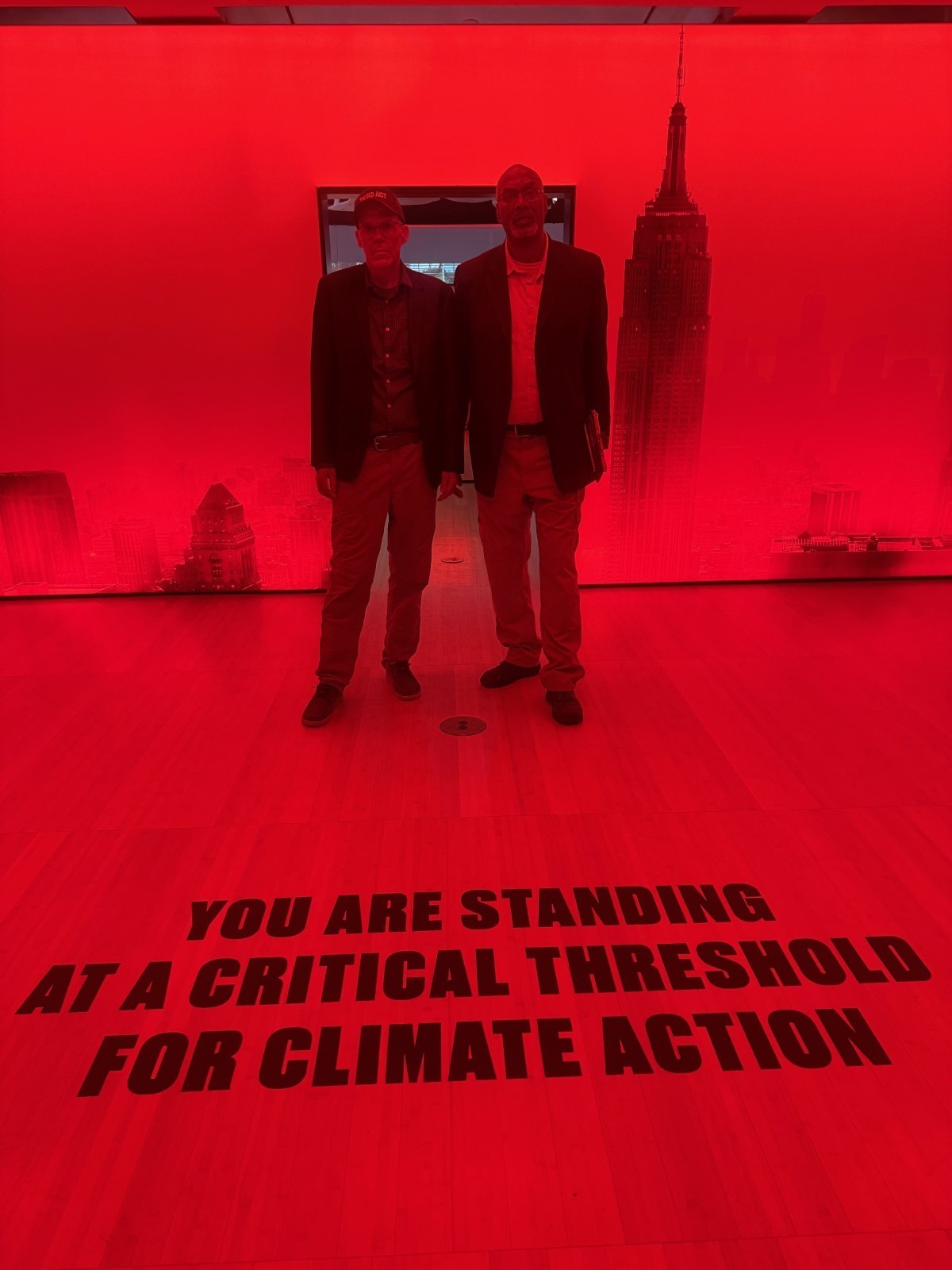
30x30: A Wild Solution for the Adirondacks' Carbon Future
By Aaron Mair - Forever Adirondacks Campaign Director
Thursday, June 6, 2024
The call to protect 30% of the planet's land and oceans by 2030, the "30x30" initiative, presents a transformative opportunity for the Adirondack Park, a vast wilderness region in upstate New York. This essay explores how the 30x30 vision aligns with the Adirondacks' unique character as a carbon sink and a bastion of wildness, highlighting the potential benefits and challenges, and proposing how the Adirondack Council, alongside other stakeholders, can champion this ambitious goal.
The Adirondacks: A Wild Carbon Sanctuary
The Adirondacks encompass over six million acres of stunning landscapes. Lush forests, sparkling lakes, and rugged mountains define a region with exceptional biodiversity. These ecosystems are not merely havens for wildlife; they play a vital role in mitigating climate change. Forests, particularly old-growth forests like those found in the Adirondacks, act as powerful carbon sinks, absorbing and storing atmospheric carbon dioxide. Studies suggest that the Adirondack Park sequesters 600,000 metric tons of carbon dioxide equivalent per year. Protecting these wildlands is critical for maintaining this natural defense against climate change.
 The "wild" character of the Adirondacks is central to their ecological significance. Untamed forests with minimal human intervention offer optimal conditions for carbon storage. Mature trees with large biomass capacities can lock away carbon for centuries. Furthermore, healthy and diverse ecosystems are more resilient to climate change impacts like drought and insect outbreaks, ensuring the long-term sustainability of this natural carbon sink.
The "wild" character of the Adirondacks is central to their ecological significance. Untamed forests with minimal human intervention offer optimal conditions for carbon storage. Mature trees with large biomass capacities can lock away carbon for centuries. Furthermore, healthy and diverse ecosystems are more resilient to climate change impacts like drought and insect outbreaks, ensuring the long-term sustainability of this natural carbon sink.
30x30: A Boon for the Adirondacks
The 30x30 initiative presents a powerful framework for safeguarding the Adirondacks' wild character and carbon sequestration potential. Here's how:
- Enhanced Protection: Expanding protected areas within the Adirondacks, including wilderness classifications, strengthens safeguards against development and fragmentation. This ensures the long-term health of the forest ecosystems and their carbon storage capacity.
- Sustainable Management: Integrating 30x30 with existing conservation efforts in the Adirondacks can lead to improved management practices that prioritize carbon sequestration. For instance, promoting selective harvesting and minimizing road construction in forests can maximize carbon storage.
- Scientific Research: Increased focus on the Adirondacks as a carbon sink can attract scientific research. Studying carbon dynamics in the region can inform conservation strategies and showcase the park's critical role in mitigating climate change.
- Economic Benefits: The Adirondacks' wild character is a cornerstone of its tourism industry. 30x30 can attract visitors seeking to experience a vast and healthy wilderness, potentially boosting the local economy.
 Challenges and Considerations
Challenges and Considerations
While the 30x30 vision offers significant promise for the Adirondacks, navigating the path forward requires addressing some challenges:
- Balancing Conservation and Recreation: The Adirondacks are a popular recreational destination. Striking a balance between protecting wild areas and ensuring responsible recreational access is crucial. Sustainable tourism practices and education initiatives can help achieve this balance.
- Community Engagement: Local communities within the Adirondack Park must be integral to the 30x30 conversation. Their voices and concerns need to be heard, and collaborative solutions developed to ensure the initiative benefits both conservation and local economies.
- Funding and Resources: Expanding protected areas and implementing effective management strategies requires significant resources. Funding mechanisms need to be explored to support 30x30 efforts in the Adirondacks. Public-private partnerships and innovative financing models can be crucial in this regard.
The Adirondack Council: Leading the Way
The Adirondack Council, a leading environmental organization dedicated to the protection of the Park, has a critical role to play in realizing the 30x30 vision within the Adirondacks. Here are some ways the Council can contribute:
- Advocacy: The Council can advocate for policies and legislation that support 30x30 goals within the Adirondacks. This includes lobbying state and federal governments to allocate resources for protected area expansion and improved management practices.
- Education and Outreach: Raising public awareness about the Adirondacks' significance as a carbon sink and the benefits of 30x30 is vital. The Council can develop educational materials and outreach programs to engage local communities, visitors, and policymakers.
- Scientific Collaboration: Partnering with research institutions can advance scientific understanding of the Adirondacks' carbon sequestration potential. Sharing research findings can inform policy decisions and garner broader support for 30x30 goals.
- Sustainable Tourism Promotion: Encouraging responsible tourism practices that minimize environmental impact and highlight the Adirondacks' wild character can attract eco-conscious visitors and generate economic benefits that support conservation efforts.
Conclusion
The 30x30 initiative presents a powerful and timely opportunity for the Adirondacks. By safeguarding the Park's wild character, we can continue to build on the Adirondack legacy for everyone's benefit.
Looking for more ways to get involved with the Council?




